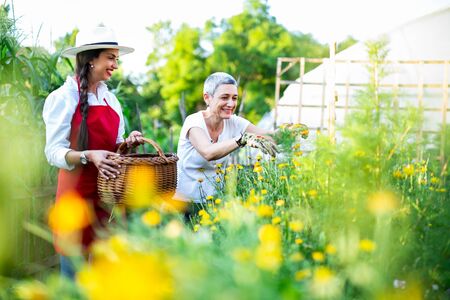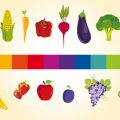Introduction to Seasonal Edible Landscaping
Seasonal edible landscaping is an innovative approach that blends the beauty of ornamental gardening with the practicality of growing your own food. By intentionally choosing plants that thrive in each season, you can design a yard that delivers both visual appeal and delicious, fresh harvests throughout the year. This method supports environmental sustainability by encouraging the use of native and climate-adapted species, which require fewer resources and help maintain local biodiversity. In American landscapes, incorporating seasonal edibles—like spring greens, summer tomatoes, fall pumpkins, and winter herbs—not only reduces your carbon footprint but also creates a dynamic garden that changes with the seasons. Whether you’re aiming for a lush backyard or a charming front yard display, seasonal edible landscaping invites you to enjoy year-round beauty while nurturing your connection to the land and fostering a more sustainable lifestyle.
2. Design Strategies for a Changing Palette
Creating a truly sustainable and visually appealing edible landscape means embracing the unique rhythms of each season. Thoughtful planning ensures your garden stays productive and beautiful year-round, with every season offering something fresh to harvest and enjoy. Here are some practical tips, focused on American native and climate-friendly edible plants, to help you design a resilient, ever-changing landscape:
Tip 1: Layer Your Plantings for Year-Round Interest
Combine trees, shrubs, perennials, and annuals to create depth and ongoing productivity. For example, plant native fruit trees such as serviceberry (Amelanchier) or pawpaw (Asimina triloba) for spring blossoms and summer fruit. Underneath, include berry bushes like blueberries or elderberries, and finish with perennial greens or herbs that thrive in your local climate.
Tip 2: Select Regionally Appropriate Edible Plants
Choose plants adapted to your USDA Hardiness Zone and local rainfall patterns. Native edibles are more likely to thrive with minimal intervention and support pollinators and wildlife. Below is a table of suggested native and climate-resilient edibles by region:
| Region | Spring | Summer | Fall | Winter |
|---|---|---|---|---|
| Northeast | Ramps, Wild Strawberries | Blueberries, Serviceberries | Pawpaw, Hazelnuts | Kale, Jerusalem Artichokes (mulched) |
| Southeast | Dewberries, Wild Garlic | Pawpaw, Muscadine Grapes | Pecans, Persimmons | Collard Greens, Mustard Greens |
| Midwest | Nodding Onion, Currants | Elderberry, Chokecherry | Pumpkin, Sunchoke | Cress, Parsnips (overwintered) |
| West Coast | Miner’s Lettuce, Fava Beans | Salal Berries, Huckleberries | Quince, Fig (coastal) | Mache, Perpetual Spinach |
| Southwest | Nopales (Prickly Pear Pads), Yucca Blossoms | Chiltepin Peppers, Amaranth Greens | Pinyon Pine Nuts, Mesquite Pods | Kale (with protection), Chard |
Tip 3: Sequence Your Harvests for Continuous Enjoyment
Select varieties that mature at different times so there’s always something ready to pick. For example, early-season strawberries give way to summer blueberries and late-season blackberries—keeping your kitchen well-stocked through the months.
Tip 4: Integrate Pollinator-Friendly Flowers Among Edibles
Add native flowering herbs like bee balm (Monarda didyma) or anise hyssop (Agastache foeniculum) to attract beneficial insects. These not only boost yields but also create vibrant color palettes as the seasons shift.
Sustainable Maintenance Practices for Lasting Beauty & Productivity
Avoid synthetic fertilizers and pesticides by enriching soil with compost and practicing crop rotation. Mulch heavily to retain moisture and suppress weeds—helping your edible landscape stay healthy while reducing your environmental impact.
A Living Landscape That Reflects the Seasons—and Your Values
The most rewarding edible landscapes evolve throughout the year. With careful selection of native and climate-friendly plants plus an eye for seasonal change, you’ll enjoy continual harvests while fostering biodiversity and resilience in your own backyard.

3. Selecting the Right Edibles for Each Season
Seasonal edible landscaping isn’t just about planting what you love to eat—it’s about embracing what thrives naturally in your local climate, and celebrating the beauty of diversity throughout the year. To create a landscape that’s both productive and visually stunning, it’s essential to choose fruits, vegetables, and herbs specifically suited to your region and each season. This approach not only boosts your harvest but also supports native pollinators, conserves resources, and reduces your garden’s environmental footprint.
Spring Selections: A Fresh Start
As winter fades, think about cool-weather crops that can handle lingering chills. In much of the U.S., early greens like spinach, lettuce, arugula, and kale thrive. Peas and radishes are also classic spring choices—they’re quick to mature and offer pops of vibrant green in your beds. For a colorful twist, plant edible flowers like pansies or nasturtiums that double as pollinator magnets and salad toppers.
Summer Picks: Heat-Loving Showstoppers
When temperatures rise, so does your palette of possibilities. Tomatoes, peppers, eggplants, cucumbers, squash, and basil all flourish in summer heat across most American regions. Choose varieties bred for disease resistance and your local climate—Southern gardeners might favor okra or sweet potatoes, while those in Northern states can enjoy bush beans or zucchini. Interplanting herbs like thyme or oregano adds texture and natural pest control.
Autumn Harvests: Colorful Bounty
Fall is a time for hearty vegetables with bold hues and flavors. Think pumpkins, butternut squash, Swiss chard, and Brussels sprouts. Many root vegetables—carrots, beets, parsnips—develop sweeter flavors after a light frost. Apple trees or late-season berry bushes provide autumn color and fresh snacks right from your yard. These selections extend both the visual interest and the productivity of your edible landscape deep into the season.
Winter Choices: Year-Round Interest
Even in colder regions, there are options for winter interest and occasional harvests. Hardy greens like collards or overwintering kale can survive mild winters with some protection. In warmer zones (USDA 8+), citrus trees such as Meyer lemons or Satsuma mandarins add evergreen structure and bright winter fruit. Consider perennial herbs like rosemary or sage for aromatic foliage all year long.
Regional Adaptation: Planting with Purpose
The key to success is matching plants to their ideal climate zone—consult local extension offices or Master Gardeners for tried-and-true varieties in your area. Prioritize native or well-adapted species to support local wildlife and minimize water use. By thoughtfully selecting seasonal edibles tailored to your region, you’ll cultivate a landscape that’s resilient, beautiful, bountiful—and truly sustainable.
4. Integrating Sustainability Practices
Creating a seasonal edible landscape isn’t just about aesthetics and harvests; it’s also about cultivating a resilient, eco-friendly outdoor space. By integrating sustainable gardening practices, you can ensure your landscape thrives year-round while minimizing your environmental footprint. Here’s how to embrace green techniques that align with American values of resourcefulness and stewardship.
Composting: Turning Waste into Wealth
Home composting is a cornerstone of sustainable landscaping. By collecting kitchen scraps and yard waste, you transform potential landfill material into nutrient-rich soil amendments. Compost enriches your garden beds, supports healthy plant growth, and reduces dependence on chemical fertilizers—making it both cost-effective and environmentally sound.
Mulching for Soil Health
Mulching is another smart strategy to conserve moisture, suppress weeds, and moderate soil temperature. Organic mulches like shredded leaves, straw, or wood chips break down over time, adding organic matter back to the soil and encouraging beneficial microbes. This method supports year-round productivity while reducing water needs—a win-win for both your plants and the planet.
Native Plant Selection for Biodiversity
Choosing native edible plants not only ensures better adaptation to local conditions but also promotes pollinator activity and biodiversity. Native species generally require less water, fertilizer, and maintenance compared to non-natives, making them ideal for an eco-conscious edible landscape. Consider blending fruiting shrubs, perennial herbs, and wild greens that flourish naturally in your region.
Water Conservation Strategies
Sustainable landscapes prioritize water efficiency. Employing drip irrigation systems, grouping plants by their water needs (hydrozoning), and installing rain barrels are effective ways to conserve water. These methods support robust harvests even during dry spells common in many parts of the U.S., reducing reliance on municipal water supplies.
Sustainable Gardening Practices at a Glance
| Practice | Benefits |
|---|---|
| Composting | Reduces waste; enriches soil; lowers need for synthetic fertilizers |
| Mulching | Saves water; suppresses weeds; improves soil structure |
| Native Plant Selection | Boosts biodiversity; requires less maintenance; supports local wildlife |
| Water Conservation | Cuts utility costs; preserves resources; ensures plant resilience year-round |
Conclusion: Building a Greener Landscape Legacy
By weaving these eco-friendly practices into your edible landscaping plan, you nurture a space that’s productive through every season—while honoring American traditions of sustainability and community care. With each mindful step, you’re investing in both beauty and bounty for generations to come.
5. Community Connections & Sharing the Harvest
Seasonal edible landscaping is more than just cultivating a beautiful, productive yard—it’s about growing relationships and building a resilient, sustainable community. By sharing your harvests and knowledge, you can inspire neighbors to embrace earth-friendly gardening and celebrate local abundance together.
Garden Swaps: Exchanging More Than Produce
One powerful way to connect is through garden swaps. Organize seasonal gatherings where neighbors bring excess fruits, herbs, or veggies from their edible landscapes to trade. These swaps not only reduce food waste but also introduce folks to new varieties and growing methods adapted to your region. It’s a grassroots approach that encourages biodiversity and keeps food miles to a minimum.
Local Food Co-ops: Supporting Each Other Sustainably
Joining or starting a local food co-op helps weave a network of growers and eaters committed to fresh, sustainably grown produce. Edible landscapers can supply co-ops with unique, homegrown crops—think heirloom tomatoes, backyard berries, or culinary herbs—while benefiting from shared resources like composting hubs or tool libraries. This collective effort strengthens food security and deepens your community’s connection to the land.
Educational Events: Spreading Knowledge for Lasting Impact
Host workshops, garden tours, or seed-saving events focused on sustainable edible landscaping practices. Invite local experts or passionate gardeners to share tips on soil health, permaculture design, or pollinator-friendly planting. These educational gatherings foster curiosity in people of all ages while empowering others to start their own eco-conscious landscapes. Plus, they’re a fun way to meet like-minded neighbors!
Together for Year-Round Abundance
By linking arms with your community—through swaps, co-ops, and educational events—you amplify the impact of your edible landscape far beyond your own yard. Together, you can create a neighborhood where sustainability thrives year-round, rooted in the joy of sharing both beauty and bounty.
6. Conclusion: Growing Beauty and Bounty All Year
Embracing seasonal edible landscaping isn’t just about cultivating a yard that looks stunning throughout the year—it’s about nurturing your connection to the environment and making a positive impact from your own backyard. By thoughtfully selecting plants that thrive in each season, you create an ever-changing tapestry of colors, textures, and flavors. This sustainable approach to landscaping not only provides fresh, homegrown produce but also supports pollinators, conserves resources, and encourages biodiversity right where you live.
When you choose to design your landscape with edible plants that match your local climate and growing conditions, you’re investing in both beauty and bounty for every season. Imagine the satisfaction of harvesting juicy berries in summer, crisp greens in fall, or fragrant herbs in spring—all while knowing your choices help reduce food miles and foster healthier ecosystems.
Now is the perfect time to reimagine your outdoor spaces as living canvases for sustainability and abundance. Start small by swapping ornamental annuals for edible perennials, or go big with fruit trees and native vegetables—every step moves you closer to a greener future. By making these mindful choices, you become a steward of the land, inspiring neighbors and building resilience in your community.
Let’s embrace year-round edible landscaping as more than a gardening trend—as a lifestyle rooted in environmental stewardship and lasting beauty. Together, we can transform our homes into thriving habitats that nourish both people and the planet, season after season.


